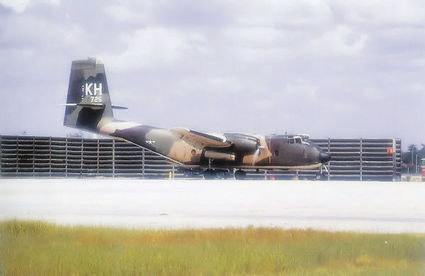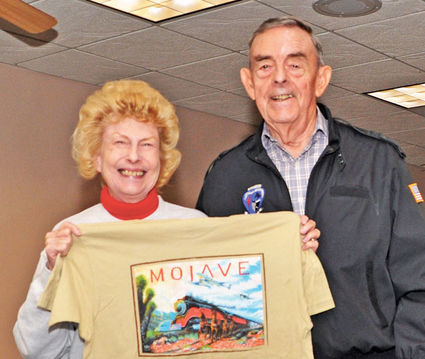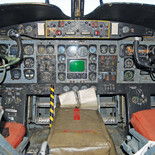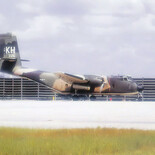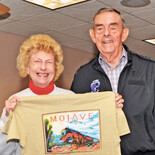Dan Yost USAF Pilot and C-7 Caribou in Vietnam
Short Flights
Retired U.S. Air Force veteran, Dan Yost gave a presentation about flying the DeHavilland Canada, DHC-4 or C-7 Caribou in Vietnam at Plane Crazy Saturday, held at Mojave Air & Spaceport on March 17.
Yost graduated from the U.S. Air Force Flight School in November 1956 and was assigned to B-47s at Schilling AFB in Salina, KS from April 1957 to June 1965. He flew B-47s for eight years; two years as Co-Pilot and six years as an Aircraft Commander. (He gave a Plane Crazy Saturday presentation about the flying characteristics of the B-47 in Sept. 2015.)
In 1965 through 1967 he was stationed at Perrin AFB in Denison, TX flying T-33s and their one and only C-47. He was sent to Vietnam in May 1968 and was assigned to fly the C-7A Caribou.
The Caribou was a short takeoff and landing cargo aircraft originally purchased by the U.S. Army. "What made this bird a STOL aircraft were the full-span flaps that extended the full length of the wing and the reversible props," said Yost.
From May 1968 to May 1969, Yost flew with the 537th Tactical Airlift Squadron (TAS) and was part of the 483rd Tactical Airlift Wing (TAW). The wing was made up of six squadrons with 15 aircraft each, and 25 three man crews. He logged 1,165 hours in the Caribou, flying 169 missions, based at Phu Cat Air Base.
His U.S. Air Force squadron wing was activated in 1967 and took over the DeHavilland C-7 Caribou aircraft that were formerly operated by the 17th Aviation Company of the U.S. Army in South Vietnam. This STOL (short takeoff and landing) aircraft was perfect for the short, unmaintained runways in Vietnam.
The 537th earned a Navy Presidential Unit Citation, as well as an Air Force Presidential Unit Citation for tactical airlift support operations in forward bases in Vietnam from January to May 1968. It earned a second Air Force Presidential Unit Citation for action between April and June 1970.
He told how the indigenous peoples of the Central Highlands of Vietnam, called Montagnards, would only eat meat that they killed themselves. Yost and other crews would fly cattle and pigs in crates for the people and in exchange the Montagnard men would fight. "They were good fighters," Yost said.
Yost also told a story about writing to his mother and asking if some of the ladies at church might send clothes for the children. His dear mother gathered children's clothes from four churches in his hometown and sent them over for him to distribute to families. He showed photos of little girls showing off their new clothes, complete with very fashionable hats.
He brought a map of Vietnam and showed the audience where many of the airstrips were located that he landed, including: Quang Tri, Hue Phu Bai, Kham Duc, My Cam Lo, Ta Bat, Tra Bong, Mang Buk, Dak Seang ("This was a dangerous location," Yost said.), Dak To, Polei Krung, Kontum, Pleiku (big station), Duc Co, Plei Me ("Perhaps our toughest strip," said Yost.), Tuy An, Hou An, Quang Ngai, Duc Pho, An Kai and Ben Het.
The photo below shows the uncluttered instrument panel. Yost told how the throttle quadrant was mounted overhead with the mixture and pitch controls. He explained how friendly the layout was and how it kept everything comfortable for the pilot. Also on the overhead console was the landing gear lever and just behind the engine controls was the aileron trim, ignition switches, flap control lever, and carburetor air-temperature control lever.
The Caribou was powered by two Pratt and Whitney Twin Wasp R-2000-7M2 engines and had a maximum gross weight of 28,500 pounds. The aircraft could carry 31 passengers or 25 fully equipped paratroops.
After serving for 21 years, Dan Yost retired from the USAF in 1977. He worked at Dryden Flight Research Facility as a contractor from 1978 to 2005.


